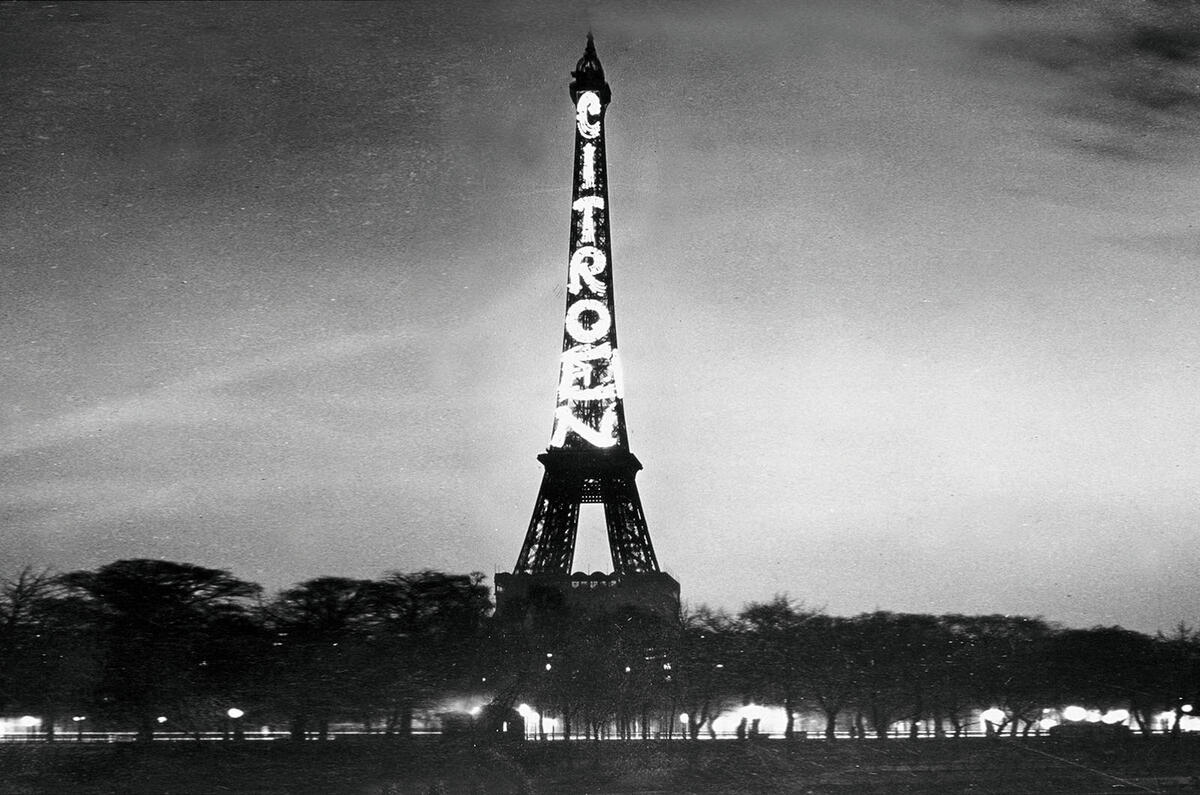André Citroën wasn’t shy about making grand statements to publicise his burgeoning car brand, which he established in 1919. In 1922 he arranged for an aeroplane to write ‘Citroën’ in the sky above Paris ahead of the opening of the seventh motor show in the French capital.
Three years later he went even better, renting the Eiffel Tower and arranging for a spectacular light show promoting his company – which was based at a factory just along the Seine – to adorn it.
The display was part of the 1925 Paris Expo. It was a significant event in the advancement of the art deco movement; the whole of the city centre was made part of the show and major landmarks were illuminated at night. Citroën’s display – which consisted of 250,000 bulbs and 370 miles of wiring – was appraised by Autocar.
“A new attraction to the night scenes in Paris has now been provided by Monsieur André Citroën,” our correspondent wrote. “In order to further bring his cars before the public, he has rented three sides of the Eiffel Tower, which is brilliantly illuminated by night with electrically lit letters each 92 feet high. At first the tower is outlined in luminous lines and then a certain number of small stars and five or six bigger ones with the tail of a comet are seen. At the same time, bright flames shooting skyward appear at the top of the tower.
“As the tails of the comets gradually lengthen to form letters making up the word ‘Citroën’, two signs, red and blue in colour, bearing the dates 1889-1925, the former the date of the tower’s creation, become luminous, and are almost immediately replaced by the double chevrons which are the Citroën trademark. This may fairly be described as the most remarkable and complete flashing advertising sign yet created.”
At that time Citroën Cars Ltd, the UK importer, was based in Hammersmith, London, with a West End showroom in Piccadilly. The manufacturer was a regular and prominent advertiser in Autocar, highlighting its 11.4hp three-seat Cloverleaf and similarly powered English Body four-seater.
Citroën’s adverts majored on the manufacturer’s “luxury of equipment”, stating that “reliability, economy and comfort are taken-for-granted features of all Citroën models”. These ads were replaced in subsequent issues by ones featuring the Eiffel Tower.
The illumination became a fixture of Parisien life, remaining on the iconic landmark until 1934. Charles Lindbergh, the first man to fly across the Atlantic, is said to have used the sign to guide him towards Le Bourget Airport as he came in to land in 1927.





Join the debate
Add your comment
At that time, Citroën was at
Nowadays automotive is the nbr 1 enemy.